Whirlpool WRS312SNHB Handleiding
Bekijk gratis de handleiding van Whirlpool WRS312SNHB (59 pagina’s), behorend tot de categorie Vriezer. Deze gids werd als nuttig beoordeeld door 160 mensen en kreeg gemiddeld 4.4 sterren uit 80.5 reviews. Heb je een vraag over Whirlpool WRS312SNHB of wil je andere gebruikers van dit product iets vragen? Stel een vraag
Pagina 1/59

W11484052B
SIDE-BY-SIDE REFRIGERATOR OWNER'S MANUAL
MANUEL D’UTILISATION DU RÉFRIGÉRATEUR
CÔTE CÔTE À
Table of Contents/Table des matières
REFRIGERATOR SAFETY.................................................2
Refrigerator Safety .........................................................2
MAINTENANCE AND CARE .............................................. 3
Cleaning ......................................................................3
Lights .......................................................................... 3
Freezer Shelf (number varies by model)..............................5
Vacation and Moving Care ............................................... 5
INSTALLATION INSTRUCTIONS ........................................ 6
Unpack the Refrigerator .................................................. 6
Location Requirements ...................................................6
Electrical Requirements .................................................. 9
Water Supply Requirements............................................. 9
Connect Water Supply .................................................. 10
Complete the Installation ............................................... 12
Install Air Filter (on some models).................................... 12
Install Produce Preserver (on some models)...................... 12
REFRIGERATOR FEATURES........................................... 13
Convertible Drawer Temperature Control (on some
models) ..................................................................... 13
Crisper Humidity Control (on some models) ....................... 14
Dual Evaporator (on some models).................................. 14
Water and Ice Dispensers.............................................. 14
Ice Maker and Storage Bin............................................. 14
Water Filtration System ................................................. 16
DOOR REMOVAL AND LEVELING STYLE 1....................... 17
Door Instructions ......................................................... 17
Install and Remove Door Handles ................................... 18
Remove Doors and Hinges ............................................ 18
Replace Doors and Hinges ............................................ 20
Door Closing and Alignment ........................................... 21
DOOR REMOVAL AND LEVELING STYLE 2....................... 23
Door Instructions ......................................................... 23
Install and Remove Door Handles ................................... 23
Remove Doors and Hinges ............................................ 24
Door Closing, Leveling, and Alignment ............................. 26
PERFORMANCE DATA SHEET ........................................ 28
Performance Data Sheet ............................................... 28
SÉCURITÉ DU RÉFRIGÉRATEUR .................................... 30
Sécurité du réfrigérateur................................................ 30
ENTRETIEN ET RÉPARATION ......................................... 31
Nettoyage .................................................................. 31
Lampes ..................................................................... 32
Tablettes du congélateur (le nombre varie selon le
modèle) ..................................................................... 34
Précautions à prendre avant les vacances ou le
déménagement ........................................................... 34
INSTRUCTIONS D’INSTALLATION ................................... 35
Déballage du réfrigérateur ............................................. 35
Exigences d’emplacement ............................................. 35
Spécifications électriques .............................................. 38
Spécifications de l’alimentation en eau ............................. 39
Raccordement à la canalisation d’eau .............................. 39
Terminer l’installation .................................................... 41
Installer le filtre à air (sur certains modèles) ....................... 42
Installation du conservateur de produits frais (sur certains
modèles).................................................................... 42
CARACTÉRISTIQUES DU RÉFRIGÉRATEUR..................... 43
Commande de température dans le tiroir convertible (sur
certains modèles) ........................................................ 43
Commande d’humidité dans le bac à légumes (sur certains
modèles).................................................................... 44
Évaporateur double (sur certains modèles)........................ 44
Distributeurs d’eau et de glaçons..................................... 44
Machine à glaçons et bac d’entreposage........................... 44
Système de filtration de l’eau.......................................... 46
RETRAIT DE LA PORTE ET AJUSTEMENT DU NIVEAU,
STYLE 1 ....................................................................... 48
Instructions pour la porte ............................................... 48
Installation et retrait des poignées de la porte..................... 48
Démontage des portes et charnières................................ 49
Réinstallation des portes et charnières ............................. 51
Fermeture et alignement des portes................................. 52
RETRAIT DE LA PORTE ET AJUSTEMENT DU NIVEAU,
STYLE 2 ....................................................................... 53
Instructions pour la porte ............................................... 53
Installation et retrait des poignées de la porte..................... 54
Démontage des portes et charnières................................ 54
Fermeture, mise à niveau et alignement des portes............. 56
FICHE DE DONNÉES DE PERFORMANCE ........................ 58
Fiche de données de performance................................... 58

2
REFRIGERATOR SAFETY
Your safety and the safety of others are very important.
We have provided many important safety messages in this manual and on your appliance. Always read and obey all safety
messages.
This is the safety alert symbol.
This symbol alerts you to potential hazards that can kill or hurt you and others.
All safety messages will follow the safety alert symbol and either the word “DANGER” or “WARNING.” These
words mean:
DANGER You can be killed or seriously injured if you don't
immediately follow instructions.
WARNING You can be killed or seriously injured if you don’t follow
instructions.
All safety messages will tell you what the potential hazard is, tell you how to reduce the chance of injury, and tell you what can
happen if the instructions are not followed.
IMPORTANT SAFETY INSTRUCTIONS
WARNING: To reduce the risk of fire, electric shock, or injury to persons when using your appliance, follow basic precautions,
including the following:
�Children should be supervised to ensure that they do not
play with the appliance.
�This appliance is not intended for use by persons (including
children) with reduced physical, sensory, or mental
capabilities, or lack of experience and knowledge, unless
they have been given supervision or instruction concerning
use of the appliance by a person responsible for their
safety.
�Do not use an extension cord.
�If power supply cord is damaged, it must be replaced by the
manufacturer, its service agent, or a similarly qualified
person in order to avoid a hazard.
�Connect to potable water supply only.
�This appliance is intended to be used in household and
similar applications such as: staff kitchen areas in shops,
offices, and other working environments; farm houses and
by clients in hotels, motels, and other residential-type
environments; bed and breakfast-type environments; and
catering and similar non-retail applications.
�Do not store explosive substances such as aerosol cans
with a flammable propellant in this appliance.
�Do not use replacement parts that have not been
recommended by the manufacturer (e.g., parts made at
home using a 3D printer).
�Keep ventilation openings, in the appliance enclosure or in
the built-in structure, clear of obstruction.
�Do not use mechanical devices or other means to
accelerate the defrosting process, other than those
recommended by the manufacturer.
�Do not damage the refrigerant circuit.
�Do not use electrical appliances inside the food storage
compartments of the appliance, unless they are of the type
recommended by the manufacturer.
SAVE THESE INSTRUCTIONS
Proper Disposal of Your Old Refrigerator
WARNING: Risk of child entrapment. Before you throw
away your old refrigerator or freezer:
�Take off the doors.
�Leave the shelves in place so that children may not easily
climb inside.
WARNING
Suffocation Hazard
Remove doors or lid from your old appliance.
Failure to do so can result in death or brain damage.
IMPORTANT: Child entrapment and suffocation
are not problems of the past. Junked or
abandoned refrigerators are still dangerous, even
if they will sit for “just a few days.” If you are getting
rid of your old refrigerator, please follow these
instructions to help prevent accidents.
Important information to know about disposal
of refrigerants:
Dispose of refrigerator in accordance with federal
and local regulations. Refrigerants must be
evacuated by a licensed, EPA-certified refrigerant
technician in accordance with established
procedures.

3
MAINTENANCE AND CARE
Cleaning
WARNING
Explosion Hazard
Risk of Fire or Explosion.
Flammable Refrigerant Used.
Do Not Use Mechanical Devices to Defrost Refrigerator.
Do Not Puncture Refrigerant Tubing.
Both the refrigerator and freezer sections defrost automatically.
However, clean both sections about once a month to avoid
buildup of odors. Wipe up spills immediately.
IMPORTANT: Because air circulates between both sections, any
odors formed in one section will transfer to the other. You must
thoroughly clean both sections to eliminate odors. To avoid odor
transfer and drying out of food, wrap or cover foods tightly.
NOTE: Do not use abrasive or harsh cleaners such as window
sprays, scouring cleansers, flammable fluids, cleaning waxes,
concentrated detergents, bleaches or cleansers containing
petroleum products on plastic parts, interior, and door liners or
gaskets. Do not use paper towels, scouring pads, or other harsh
cleaning tools. Stainless steel models have a coating. Do Not use
regular stainless steel cleaning products. Do Not use stainless
steel cleaner or polish and use only mild soap, water, and soft
microfiber cloth to avoid damage to the stainless steel protective
coating. Paper towels scratch and may dull the clear coat of the
painted door. To avoid possible damage, use only clean cloths to
polish and wipe the door.
1. Unplug refrigerator or disconnect power.
2. Hand-wash, rinse, and dry removable parts and interior
surfaces thoroughly. Use a clean sponge or soft cloth and a
mild detergent in warm water.
3. Wash stainless steel and painted metal exteriors with a clean
sponge or soft cloth and a mild detergent in warm water.
WARNING
Explosion Hazard
Risk of Fire or Explosion due to Puncture of Refrigerant
Tubing;
Follow Handling Instructions Carefully.
Flammable Refrigerant Used.
4. There is no need for routine condenser cleaning in normal
home operating environments. If the environment is
particularly greasy or dusty, or there is significant pet traffic in
the home, the condenser should be cleaned every 2 to 3
months to ensure maximum efficiency.
If you need to clean the condenser:
�Remove the base grille. See the “Door Removal”
instructions, either in the Owner’s Manual or in the
separate instruction sheet provided with your refrigerator.
�Use a vacuum cleaner with a soft brush to clean the grille,
the open areas behind the grille, and the front surface area
of the condenser.
�Replace the base grille when finished.
5. Plug in refrigerator or reconnect power.
Lights
Not all bulbs will fit your refrigerator. Be sure to replace the bulb
with one of the same size, shape, and wattage.
IMPORTANT: The light bulbs in both the refrigerator and freezer
compartments of your new refrigerator may use LED technology.
On some models, the LED light bulbs in the refrigerator, freezer,
air tower, and dispenser cannot be changed by yourself. If the
lights do not illuminate when the refrigerator and/or freezer door is
opened, call for assistance or service. In the U.S.A., call
1-800-253-1301. 1-800-807-6777.In Canada, call
Light Styles:
The dispenser lights are LEDs that cannot be changed.
The interior lights vary by model.
�Some models have mini LEDs that cannot be changed.
�Some models have full-size LED bulbs that can be changed.
To order replacement 2.0 W LED bulbs, use part number
W10574850A, and for 3.6 W, use part number W10565137A,
or call (U.S.A.) or (Canada).1-800-253-1301 1-800-807-6777
2.0 watts 3.6 watts
NOTE: Some LED replacement bulbs are not recommended
for wet/damp environments. The refrigerator and freezer
compartments are considered to be wet/damp environments. If
using a brand of LED bulb other than the recommended
Whirlpool LED bulb, read and follow all instructions on the
replacement bulb’s packaging before installing it.
�Some models have interior incandescent 40 W
bulbs that can be changed.
NOTE: Not all replacement bulbs will fit your
refrigerator. Do not use an incandescent bulb in
excess of 40 watts.
To Change a Light Bulb:
1. Unplug refrigerator or disconnect power.
2. Remove the light shield, as explained in the following
sections.
NOTE: To clean the light shield, wash it with warm water and
liquid detergent. Before reinstalling, thoroughly rinse and dry
the shield.
Product specificaties
| Merk: | Whirlpool |
| Categorie: | Vriezer |
| Model: | WRS312SNHB |
Heb je hulp nodig?
Als je hulp nodig hebt met Whirlpool WRS312SNHB stel dan hieronder een vraag en andere gebruikers zullen je antwoorden
Handleiding Vriezer Whirlpool
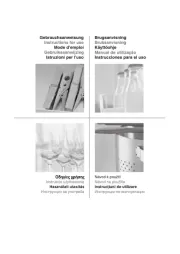
9 September 2025
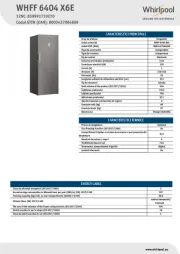
3 September 2025
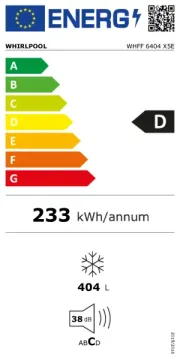
5 Juli 2025
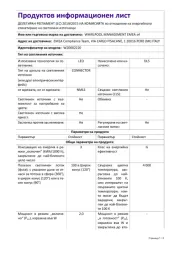
4 Juli 2025
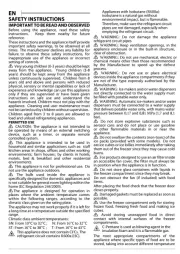
4 Juli 2025
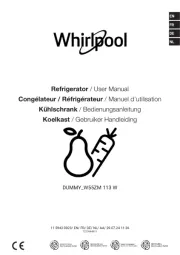
4 Juli 2025

4 Juli 2025
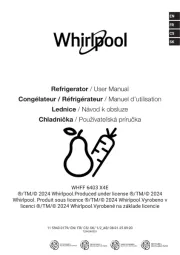
4 Juli 2025
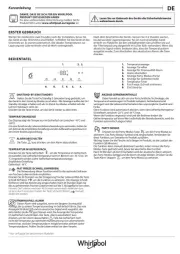
12 Mei 2025
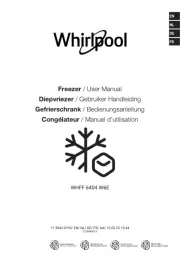
11 Mei 2025
Handleiding Vriezer
- GE
- Russell Hobbs
- Caple
- Bartscher
- Kenmore
- ETA
- Salton
- Novy
- Scholtes
- Thermador
- Curtis
- ATAG
- Premium
- InAlto
- Defy
Nieuwste handleidingen voor Vriezer
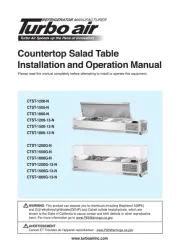
13 September 2025
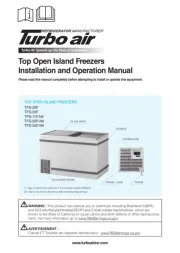
13 September 2025
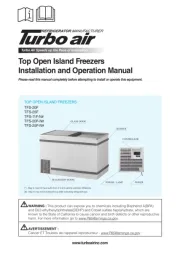
13 September 2025
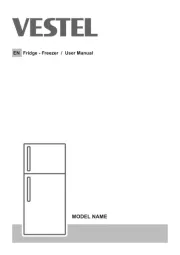
13 September 2025
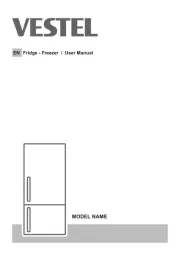
12 September 2025
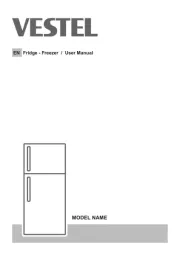
12 September 2025
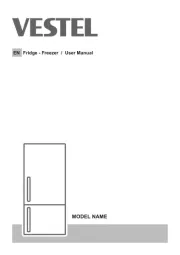
12 September 2025
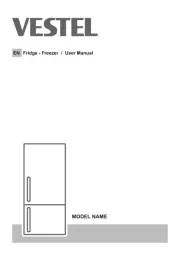
12 September 2025
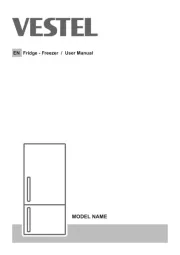
12 September 2025
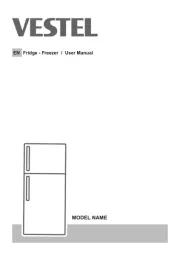
12 September 2025